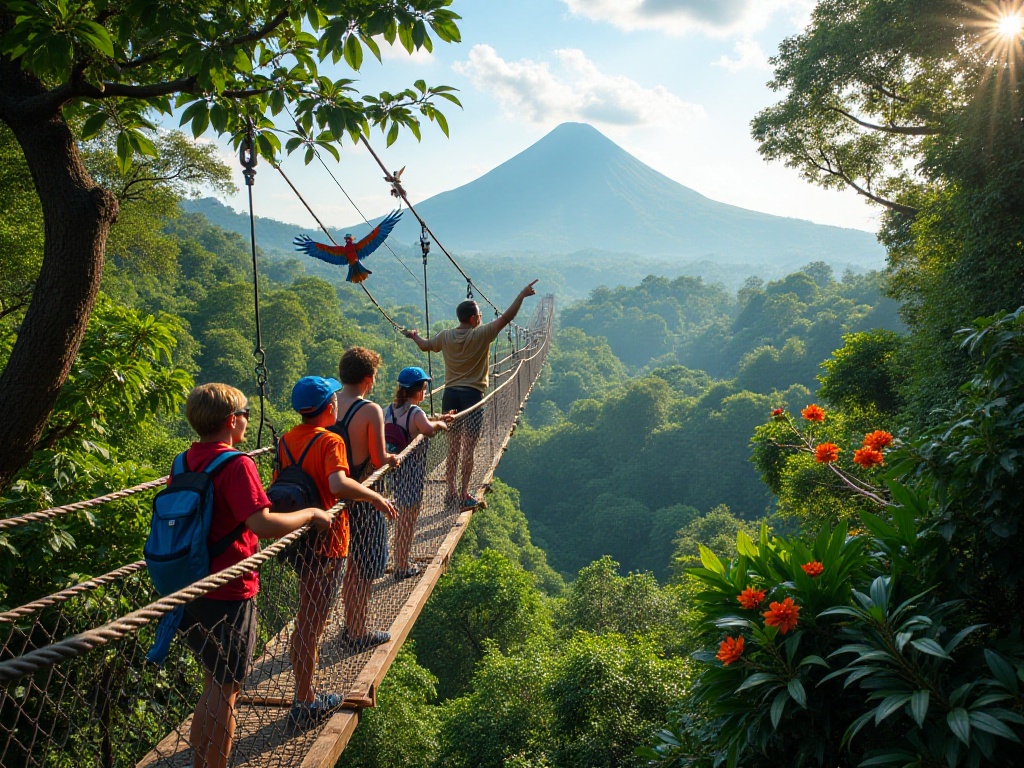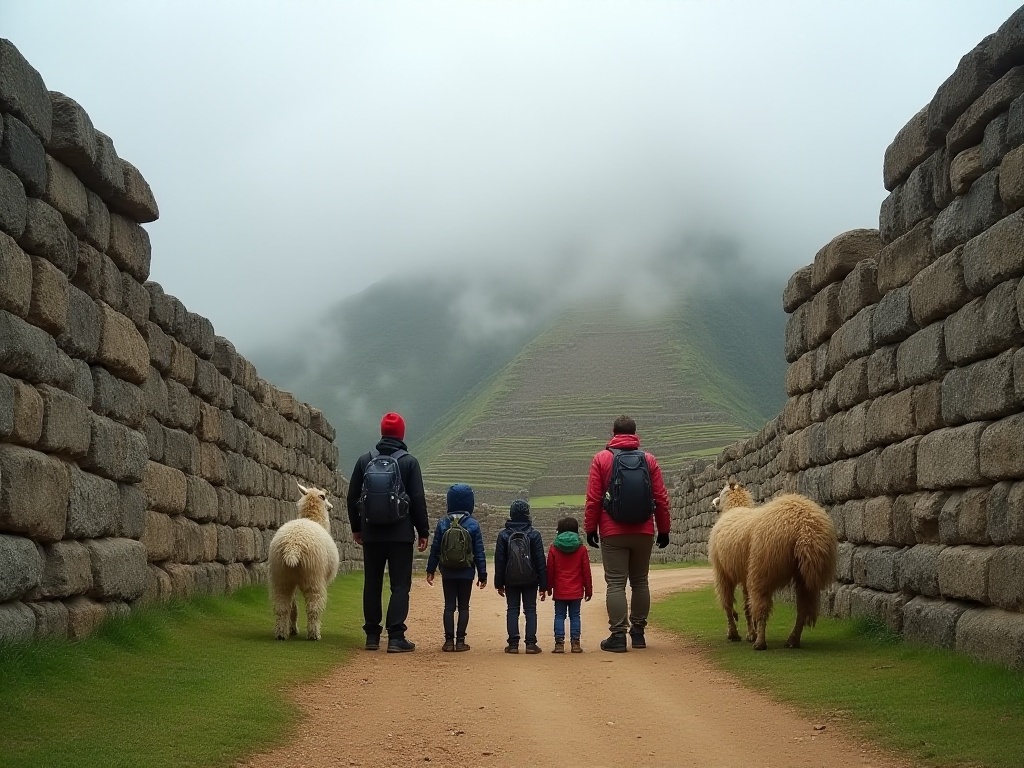Hi everyone, I'm travel blogger Little P! As a mother of two, from carrying a newborn to now having my eldest in elementary school, I've gained so many insights along the way. Whenever I see moms in my social circle hesitating about traveling with kids, I want to share my years of experience. While traveling with children may seem daunting, it can be truly enjoyable with the right approach!
I remember being completely overwhelmed when I first started traveling with my eldest. Just packing was enough to drive me crazy, not to mention all the unexpected situations on the road. But with growing experience, I can now handle various situations with ease and even find unexpected joys during our travels.
I have so much to say about types of family vacations! After years of experience, I think all-inclusive resorts are absolutely the ultimate choice for traveling with kids. Last summer, we had an amazing time at a resort in Sanya. Think about it: they had special family rooms with children's beds and anti-slip facilities; dedicated kids' dining areas with cute children's tableware; and swimming pools divided into several zones with carefully designed depths suitable for different age groups.
What impressed me most was the resort's kids' club. The staff there were like childcare angels - they knew all sorts of interactive games and could attend to each child's needs. Once when my younger one was being clingy and refusing to join in, a staff member used puppet theater to capture his attention, and he ended up not wanting to leave. The club designs activities for different age groups, like crafts, painting, and beach treasure hunts, keeping the children thoroughly entertained.
Cruise vacations are also an excellent choice. I remember our first cruise with our eldest on a Southeast Asian route. Wow, it opened up a whole new world! The ship had dedicated children's pools, adventure playgrounds, mini golf, basketball courts, and more. There were different themed children's activities every day, like pirate parties, clown shows, and magic classes. Best of all, these activities were led by professional staff, making them both safe and fun.
The restaurants on cruise ships are also great for kids. Once at the buffet, when my eldest wanted some pasta but couldn't serve himself, the waiter immediately helped and even cut it into small pieces - such thoughtful service was truly touching. The evening shows were spectacular, from Broadway-style musicals to acrobatic performances, and I loved seeing my eldest's eyes wide with amazement every time.

Traveling with infants can seem challenging at first, but with proper preparation, it's not as scary as it seems. Hotel selection is crucial - you must choose ones that are especially baby-friendly.
For example, the hotel we stayed at last year not only provided cribs but also baby bathtubs and changing tables. Most thoughtfully, they offered baby-specific toiletries of good quality. Bottle warmers were standard in rooms. They even had strollers available for borrowing, which made our outings much easier.
For itinerary planning, I recommend prioritizing the baby's routine over sightseeing. Once we tried to visit too many attractions and disrupted the baby's nap schedule, resulting in a cranky afternoon that exhausted everyone. Since then, I've always strictly planned around the baby's usual routine, ensuring plenty of rest time at noon.
Medical facilities are particularly important. When choosing destinations, we always check local healthcare options first. While some remote scenic spots are beautiful, if medical facilities are inadequate, it's better to wait until the children are older. Once when my younger one suddenly developed a fever, we were fortunate to be near a major hospital for prompt treatment.

Children this age are fascinating - full of curiosity and energy. When traveling with them, it's most important to choose places where they can fully release their energy. Theme parks are an excellent choice.
Speaking of theme parks, I must mention our trip to Disney with my younger one last year. Though the queues were long, every detail in the park was delightful. During parades, princesses would stop to interact with children; staff would perform magic tricks to entertain kids who were getting restless in line. Most memorable was when my younger one was too excited to speak upon meeting Mickey - Mickey knelt down to high-five him and gave him a big hug. The expression on his face at that moment made all our efforts worthwhile.
Family resorts are also great choices. Many resorts now design activities for different age groups. One we visited had children's baking classes, little farmer experiences, and fun science experiments. These activities were not just fun but educational too. After one farming experience where my younger one picked cherry tomatoes himself, he became much more interested in eating vegetables - such learning through play is really wonderful.

At this age, children's cognitive abilities and physical strength have improved significantly, allowing for more diverse travel experiences. Our trip to Yunnan last summer really showed me this.
We specifically chose activities with local characteristics, like visiting ethnic minority villages, experiencing traditional tie-dye, and learning Yi ethnic dance. I was worried my eldest might get bored, but he was completely captivated by these exotic experiences. Especially during the Yi dance, he spontaneously joined the local children in dancing - that natural interaction was truly touching.
Children this age can also start engaging in some outdoor activities. In Yunnan, we joined a family hiking activity on a moderately difficult trail. Though my eldest complained about being tired, whenever we reached a viewpoint and saw the beautiful scenery, he would proudly say "I did it!" This sense of achievement from overcoming challenges is hard to experience elsewhere.
We also arranged some cultural experience activities. We visited a unique museum with interactive areas specially designed for children. My eldest learned about Yunnan's history and culture there and even made a Dai ethnic handicraft. These experiences not only broadened his horizons but also cultivated his interest in and understanding of different cultures.

Regarding specific family vacation planning, I think thorough preparation is most important. Over the years, I've gathered many useful tips to share in detail.
About budgeting, good planning is essential. A family of four's vacation costs aren't low, but there are many money-saving tricks. First is booking early - many resorts offer early bird discounts. I usually start watching 3-6 months ahead and sometimes save over 30%. Also, keeping an eye on airline promotions is important - we used points for several flights last year, saving quite a bit.
For accommodation, I strongly recommend family rooms. Though more expensive than standard rooms, the amenities are worth it. Some family rooms include children's beds, toilet seats, non-slip mats, and other essentials for traveling with kids. Many hotels also include children's breakfast and welcome gifts with family rooms, making them quite cost-effective.
For itinerary planning, my experience is to always leave enough flexible time. Traveling with kids can bring all sorts of unexpected situations. Like our recent Sanya trip - we had to cancel planned water park activities when the little one suddenly got a fever. Fortunately, our schedule was flexible, and we quickly switched to an indoor aquarium, which the kids still enjoyed. So I suggest planning only 1-2 major activities per day, leaving other time flexible.
Equipment is really important. I have a specific checklist based on children's different age needs. For 0-3 year olds, besides basic clothing, prepare plenty of diapers, wipes, formula, and bottles - about 30% more than expected. Essential medicines are also necessary - fever reducers, anti-inflammatory drugs, band-aids, etc.
Especially important is preparing enough snacks and toys. These are really helpful on planes or long trips. I usually prepare some new toys to bring out when children get restless, which works very well. For snacks, choose items that are easy to store and won't make a mess, like crackers and dried fruit.
After sharing so many wonderful travel experiences, I think it's necessary to mention some easily overlooked but very important details. These are lessons learned from our many experiences.
First is insurance. This is really important, though many parents might think it unnecessary. Actually, it's especially crucial when traveling with children. We always buy comprehensive insurance for each trip, including accident medical and emergency rescue coverage. Though it might cost a few hundred more, the peace of mind throughout the journey is priceless.
Once abroad, when my eldest fell and scraped his knee requiring hospital treatment, having insurance made the whole process smooth, from finding a hospital to claims settlement. So I suggest everyone take this seriously - carefully compare different insurance products' coverage and choose the most suitable one.
The second important point is accommodation safety. This is crucial because children can be mischievous and accidents happen easily. Last year we stayed at a resort that was new and beautiful but had very slippery bathroom floors. We had to buy anti-slip stickers to feel safe. So when booking rooms, ask about these safety details and try to see real photos or other guests' reviews.
Besides floor slip resistance, check for sharp corners, socket covers, window safety nets, etc. Some seemingly high-end hotels might actually be lacking in these details. I suggest checking these safety issues immediately upon check-in and bringing your own protective equipment if necessary.
The third point is weather and seasonal factors. Often overlooked, these greatly affect travel experiences. For beach trips with kids, avoid typhoon season as unstable weather affects many outdoor activities. When visiting northern cities, avoid times of poor air quality as children's respiratory systems are more vulnerable.
Once we visited an island during rainy season - many water activities were cancelled, disappointing the children. Since then, I always research destination climate patterns and choose the best season to visit. I also prepare backup indoor activity lists for rainy days.

Looking back on these years of traveling with children, I feel really warm inside. Though there were various difficulties and challenges, seeing the children gain happiness and knowledge through travel makes it all worthwhile.
My eldest still often talks about our Chimelong trip from two years ago. Though it was tiring then, seeing him excitedly share his panda encounter stories with classmates and his photo wall full of travel pictures makes everything beautiful. These happy memories will stay in our hearts forever, becoming our family's shared spiritual wealth.
Actually, the most important thing about traveling with children isn't how far you go or how much you spend, but how the family understands each other and grows together. Each trip is a precious parent-child interaction opportunity, letting us temporarily set aside work and study pressures to focus on being together.
I believe every family has their unique travel stories. Do you have any interesting family vacation experiences to share? Or are you particularly interested in any suggestions mentioned? Welcome to tell me in the comments - let's exchange ideas and learn from each other. After all, family vacation stories can be discussed endlessly, and everyone's experience is a unique and wonderful story.
 Previous
Previous



